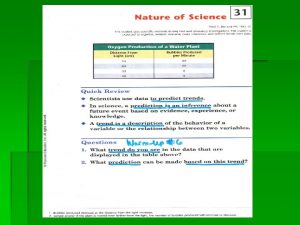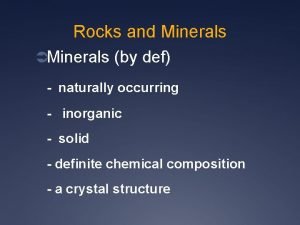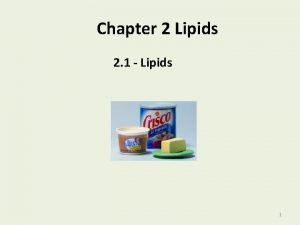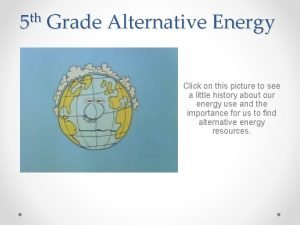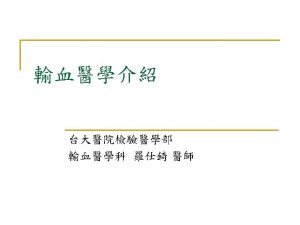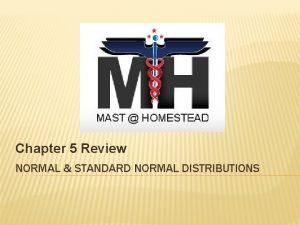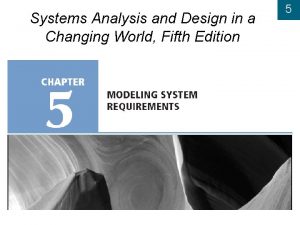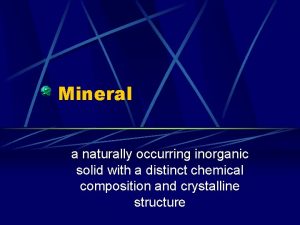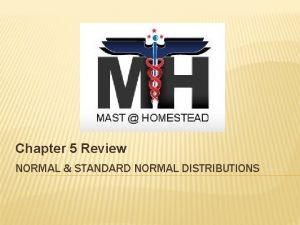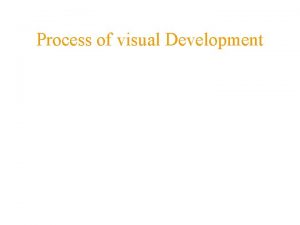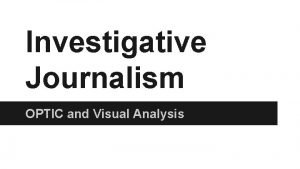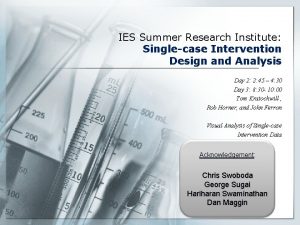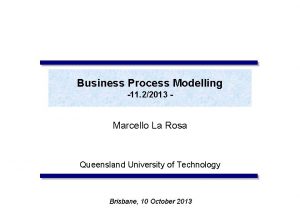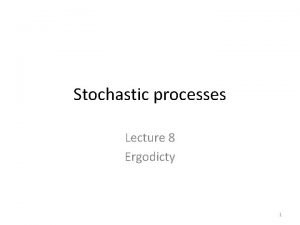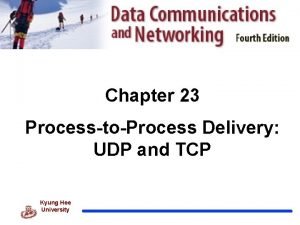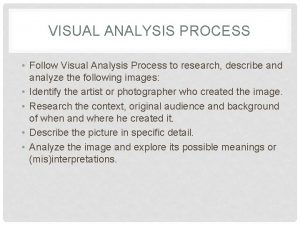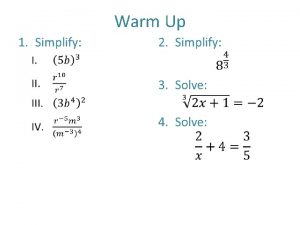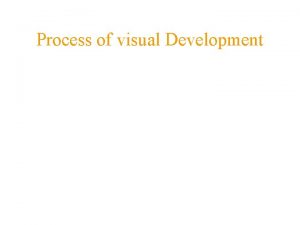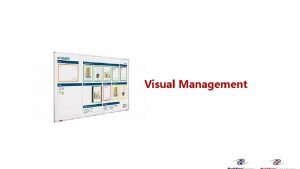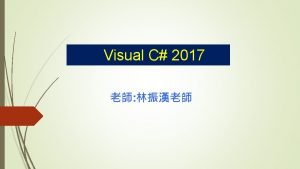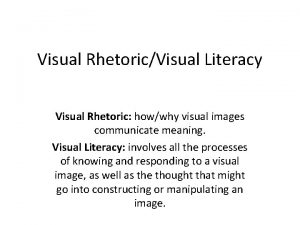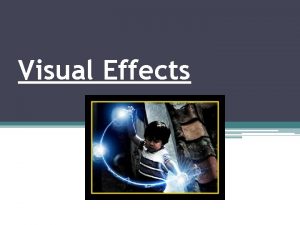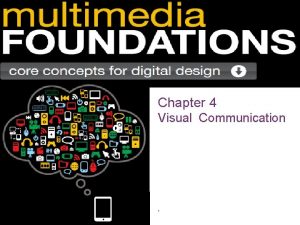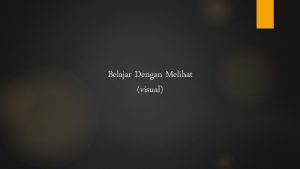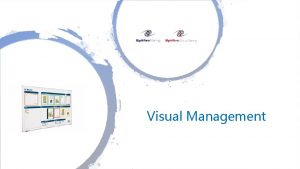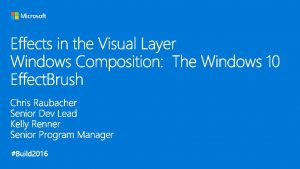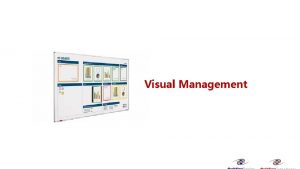Warm Up Visual Analysis What process is occurring


























- Slides: 26


Warm Up – Visual Analysis § What process is occurring? How does this process happen? Use the terms DNA, RNA, and ribosomes in your response.

§ RNA carries the genetic code to ribosomes. The ribosomes then synthesize proteins.

Agenda § Focus: How do mutations impact us? How has genetic engineering affected mankind? § Learning Target: I can analyze the effects of mutations and genetic engineering and evaluate associated consequences § Tasks: Warm Up (5 -10 mins) § Introduction to mutations and GE (15 mins) § Review of Mutations Lab & Introduction to Genetic Engineering Project (20 mins) § Closure & Next Steps (5 mins)

§ I. All cells in the body contain the same genes. Only some of these genes are turned on, that is, your eye cells contain the instructions on how to make bones, but only the genes to make new eye cells are actually turned on. We do not yet know exactly why this happens.

Turn and Talk § Can the environment affect the expression of genes? If you believe it can, what are some instances you can think of? How is the organism affected?

Environment Affecting Gene Expression § While genes determine our traits, the environment can affect expression of genes. § A gene codes for a protein and the protein § § does its “job”. GENE EXPRESSION CAN BE MODIFIED BY THE ENVIRONMENT BECAUSE ENVIRONMENTAL FACTORS CAN TURN GENES ON AND OFF. Skin color CERTAIN CANCERS Weight

GENETIC VARIATION § Two reasons for genetic variation are: § When the genetic code is mutated, the protein is altered and the trait is changed permanently. § The expression of the trait can be altered based on exposure to various environmental conditions.

MUTATIONS Changes in DNA that affect genetic information

Significance of Mutations • Most are neutral • Birth marks • Some are harmful • Sickle Cell • Down Syndrome • Some are beneficial • Sickle Cell Anemia to Malaria • Immunity to HIV

What Causes Mutations? § There are two ways in which DNA can become mutated: § Mutations can be inherited. § Parent to child § Mutations can be acquired. § Environmental damage § Mistakes when DNA is copied

Gene Mutations § Point Mutations – changes in one or a few nucleotides § Substitution § THE FAT CAT ATE THE RAT § THE FAT HAT ATE THE RAT

Gene Mutations § Frameshift Mutations – shifts the reading frame of the genetic message so that the protein may not be able to perform its function. § Insertion § THE FAT CAT ATE THE RAT § THE FAT HCA TAT ETH ERA T § Deletion H § THE FAT CAT ATE THE RAT § TEF ATC ATA TET GER AT H

Deletion A part of the chromosome is missing

Addition/Insertion § A segment breaks off of one chromosome and reattaches to the pair. The result is duplication of genes on the same chromosome.

Turn and Talk § Determine if the following are insertion, deletion, or substitution. § ABCDEFG ABCEFG § ABCDEFGXZ § ABCDEFG ABCDZFG

Karyotype – picture of chromosomes- Humans have 46 chromosomes or 23 pairs


Point Mutation Example § Sickle Cell Anemia – Mutation that causes RBC’s to have a sickle shape § RBC’s are also destroyed at an increased rate.

Sex Chromosome Abnormalities § Klinefelter’s Syndrome § § § XXY, XXYY, XXXY Male Sterility Small testicles Breast enlargement


Some mutations even make it on SNL!

§ J. Selective breeding produces animals and plants with desired traits (disease resistance, larger fruit, more meat or milk, specific colors).

§ K. Genetic engineering or gene splicing inserts genes of one organism into the genes of another. Enzymes are used to cut and copy the DNA segments. Bacteria are often used because they have no nucleus protecting their DNA and they reproduce very quickly, allowing large amounts of medicine (insulin) to be made.

§ a. The example of gene splicing: The gene to make human insulin was inserted into bacteria. These bacteria can now make insulin that is exactly the same as human insulin. This insulin is used by diabetics. This is safer than the cow and sheep insulin that were used in the past.

 What process is occurring
What process is occurring Naturally occurring mineral
Naturally occurring mineral Largest naturally occurring element
Largest naturally occurring element Advantages of hydroelectric
Advantages of hydroelectric Naturally occurring areas of hydrothermal resources
Naturally occurring areas of hydrothermal resources Largest naturally occurring element
Largest naturally occurring element Glycerol fatty acid
Glycerol fatty acid Naturally occurring areas of hydrothermal resources
Naturally occurring areas of hydrothermal resources Reverse typing
Reverse typing Find the probability of z occurring in the indicated region
Find the probability of z occurring in the indicated region Is a naturally occurring association among specific things
Is a naturally occurring association among specific things A naturally occurring inorganic solid
A naturally occurring inorganic solid Find the probability of z occurring in the indicated region
Find the probability of z occurring in the indicated region Perbedaan pemrograman konvensional dan pemrograman visual
Perbedaan pemrograman konvensional dan pemrograman visual Dimensional analysis warm up
Dimensional analysis warm up Visual development process
Visual development process Visual merchandising swot analysis
Visual merchandising swot analysis Optic visual analysis
Optic visual analysis Ies visual analysis
Ies visual analysis Optic writing strategy
Optic writing strategy Visual analysis
Visual analysis Coronoid process and coracoid process
Coronoid process and coracoid process Substantive vs procedural due process
Substantive vs procedural due process Business process levels
Business process levels Ergodicty
Ergodicty What is process to process delivery
What is process to process delivery Coronoid and condylar process
Coronoid and condylar process
